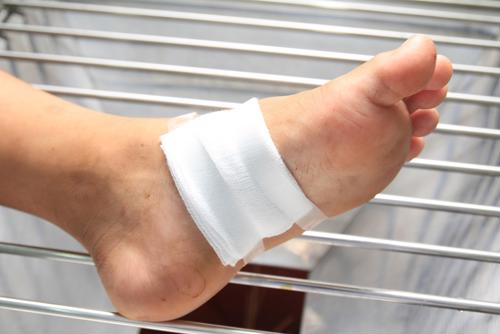A study by the Centers for Disease Control and Prevention reports that diabetes rates are at a steady growth, with more than 100 million people in the country living with diabetes or prediabetes as of 2017. This condition has a major impact on overall health and wellness and can cause serious complications involving vision loss, heart disease, stroke, and even toe, foot or leg amputation due to ulcers.
Defining diabetic foot ulcers
According to the American Podiatric Medical Association, a diabetic foot ulcer is an open wound or sore that occurs in those who have diabetes. Diabetic patients are more likely to develop neuropathy, or a lack of ability to feel pain because of a spike in blood glucose levels. Ulcers often form because of poor circulation and absence of pain, making it difficult to understand there’s a problem before it’s too late.
Foot ulcers impact about 15% of those living with diabetes. Approximately 14-24% of these individuals end up in the hospital and ultimately have to have an amputation.
Treatment and pain management options
If you have diabetes, it’s important to visit a podiatrist and other specialists regularly beyond your general practitioner. These individuals can check and test certain areas of your body to ensure zero ulcers have formed. After meeting with a specialist, consider the following options for pain management and at-home treatment:
Check your feet regularly
Thoroughly examine your toes, feet and legs daily for changes in color or temperature that might signify a sore or severe callous is on the way.
 See a specialist regularly for foot inspections.
See a specialist regularly for foot inspections.Choose comfortable footwear
The right fitted footwear will keep your feet from rubbing and allow adequate space and comfort. Tight shoes can cause blisters, and neuropathy can keep you from noticing them.
Wear a compression cast
Too much pressure on the feet is a common cause of diabetic ulcers. Researchers at the diabetic foot clinic at King’s College Hospital in London recommend wrapping your leg in a semi-compressed felt padding cast to redistribute plantar pressure.
Change appropriate dressings daily
To keep wounds moist and free of infection, use saline or similar dressings to wrap the area daily, per an eMedicine recommendation. iPAK by Innovative Outcomes is a valuable resource to consider when you’re constantly changing your dressings; this home delivery wound care resource sends you customized supplies and video tutorials based on the specific needs of your diabetic ulcer.





